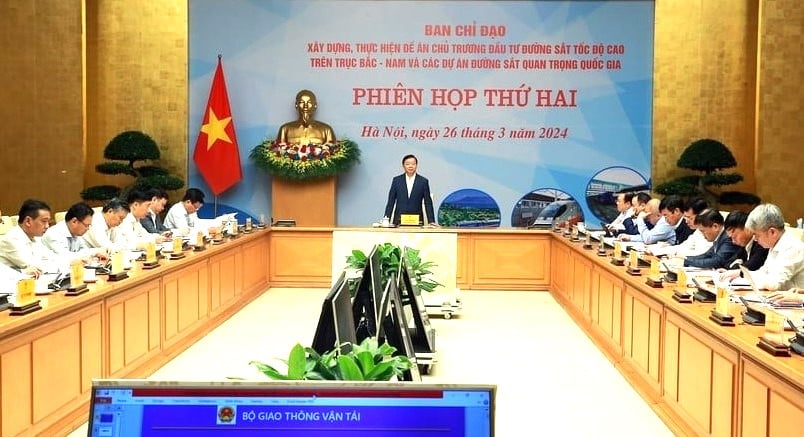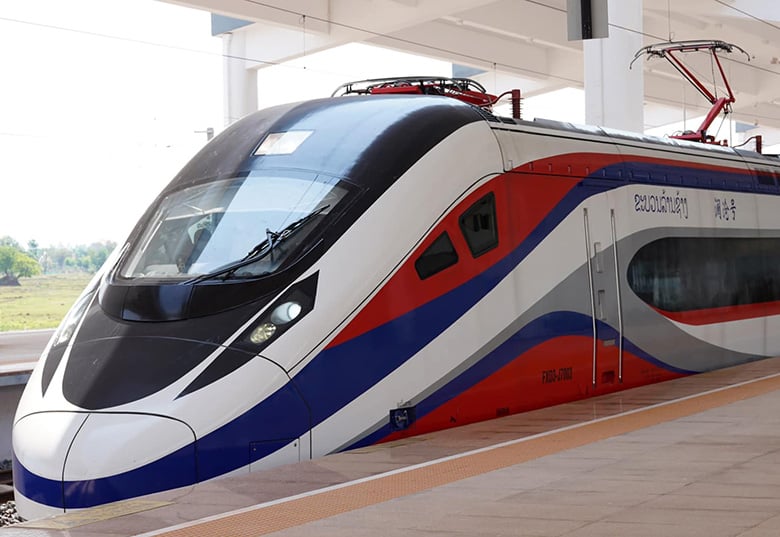A future trans-Vietnam high-speed railway is expected to contribute one percentage point to the country’s annual economic growth in the 2025-2037 period, a report has shown.
Such contribution is possible if the railway has a designed speed of 350 kilometers/hour and transports both passengers and freight, the Ministry of Transport said in the report read at the second gathering of the steering committee for the North-South high-speed railway and key national railways projects on Tuesday.

Speaking at the meeting, Deputy Minister of Transport Nguyen Danh Huy listed multiple challenges facing the colossal high-speed train project. “Given its large scale and complexity, the project implementation will require close coordination of government agencies and localities.”
In addition, despite its huge economic effects, the project is expected to have low financial effectiveness. Thus, the government needs to play the crucial role in financing it.
Vietnam’s railway industry is not capable enough to produce vehicles, equipment and spare parts for such a project and is short of highly-skilled experts to operate it, Huy added.
Commenting on the project, professor La Ngoc Khue, a former Deputy Minister of Transport, suggested the high-speed railway embrace cargo transportation with the aim of cutting logistic costs. “It definitely needs to be linked with international railways,” he stressed.
“Given its competitive edges over inland waterways and sea routes, the high-speed train project offers a huge opportunity for the railway industry to increase its long-haul freight transportation and increase the country’s economic competitiveness,” Khue added.
Echoing Khue, economist Le Xuan Nghia said that a future carbon tax will add a burden on road, waterway and air transport costs. This fact will sharpen advantages of railway transportation.

Nguyen Van Phuc, a former parliamentarian overseeing economic issues, recommended the government make breakthroughs in institutions and policies to facilitate the project implementation in the context of the country’s technological setbacks.
Concluding the meeting, Deputy Prime Minister Tran Hong Ha, head of the steering committee, highlighted the importance of high-speed railways to the national economy. He asked the transport ministry to refine detailed plans on construction of high-speed railways.
In November 2023, the Ministry of Transport started to collect comments from government agencies on three scenarios for the North-South high-speed train project.
The scenarios examine possibilities to construct a railway with different criteria such as designed speeds, ranging from 200 to 350 km/h, and either passenger or cargo transportation exclusively or in combination. Costs are estimated at $67.3-72 billion Vietnam’s GDP in 2023 is about $430 billion, according to the General Statistics Office.
The Vietnamese government is actively seeking funding for the project. Earlier this month, Minister of Finance Ho Duc Phoc met with Japanese government agencies and asked for their financing.
Source: The Investor
27/04/2024
 info@mplogistics.vn
info@mplogistics.vn (+84) 28 3811 9033
(+84) 28 3811 9033




 VN
VN